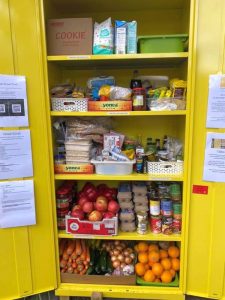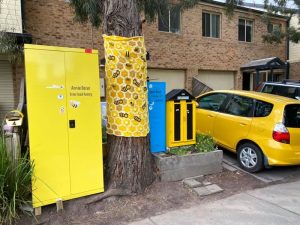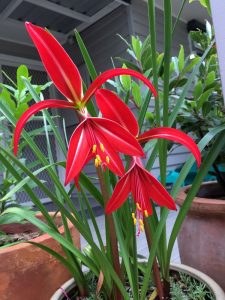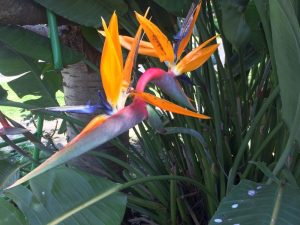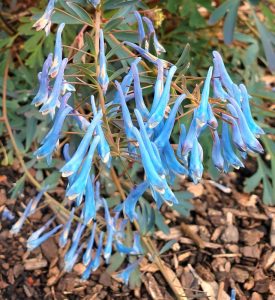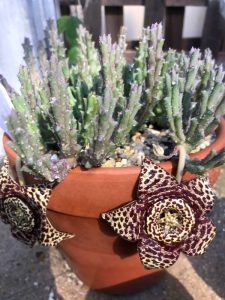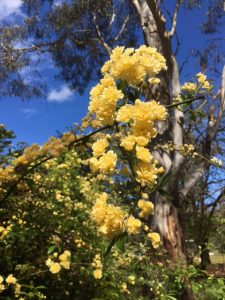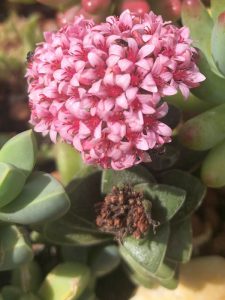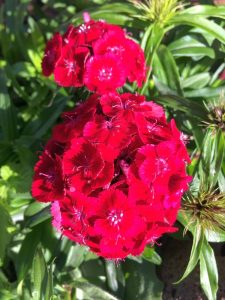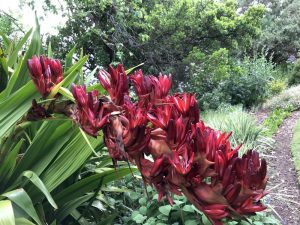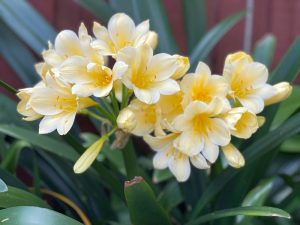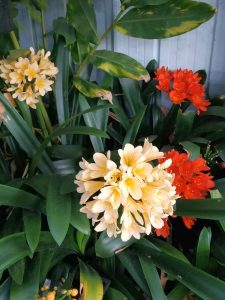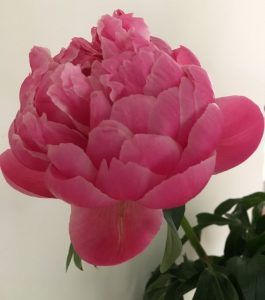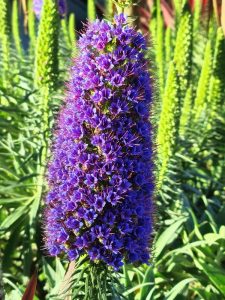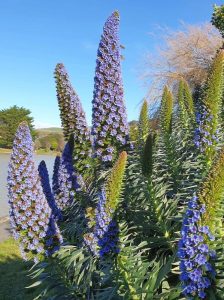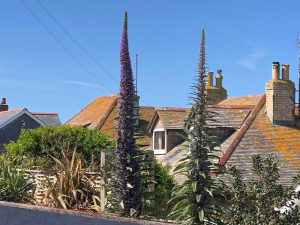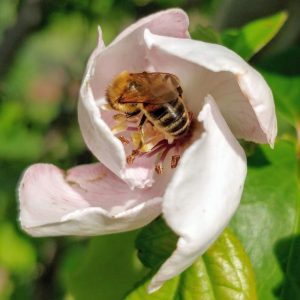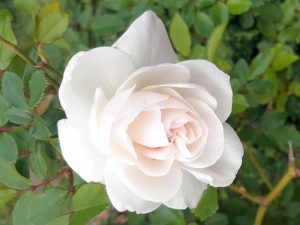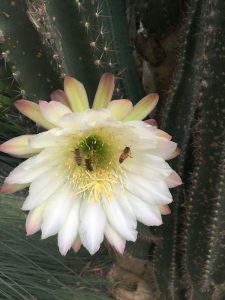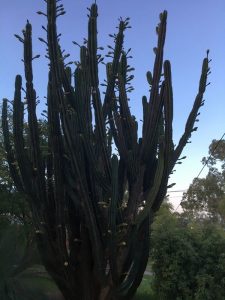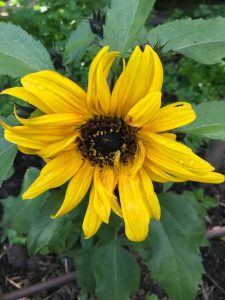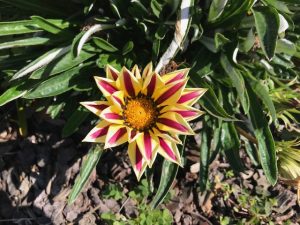Thanks to all the people who have contributed to this week’s newsletter: Amanda Coombes, Angela Harridge, Anna Rosa Pascuzzo, Bali Portman, Bruno Tigani, Cathy Romeo, Choon Yin Yeok, Chris Chapple, Chris Kent, Claire Smith, Dave Chambers, Doris Glier, Dorothy Kwak, Georgia Tracy, Jon Buttery, Julie French, Kim Riazi, Ling Wong, Lyn Richards, Megan Goodman, Rebecca Haschek, Robin Gale-Baker, Simone Boyd, Suzy Georges, Victoria Kanicki and Yennie Yong.
Given that we are not including any face-to-face events at the moment, there is lots of space to include other things. Now would therefore be a really good time for you to submit some words about any food-related matters. It can be anything so long as it is food-related: ask a question, provide a tip, discuss an issue, submit a photo, send in a recipe, etc. Email us with your contribution(s).
This week’s farmers’ markets
Sunday: Alphington and Eltham.
Seaweed tonics or liquid nitrogen fertilisers? (by Robin Gale-Baker)
[Robin, from Sustainable Macleod has produced another article for us, this time on which liquid solutions to use in which circumstances, a summary of which is given below. Read the full article.]
Liquid solutions are valuable because plant roots can only absorb nutrients in liquid form. Essentially, there are two types of liquid solutions:
- Foliar sprays that contains trace elements (also known as micronutrients) such as seaweed sprays e.g. Seasol and Maxicrop. Trace elements are mineral elements needed by plants in minute amounts, and are essential for plant health. Foliar sprays are sometimes called ‘tonics’.
- Nitrogen-based sprays made from fish e.g. Charlie Carp and Powerfeed. Nitrogen is an essential element in many plant functions including creating chlorophyll, which is vital for photosynthesis in plants. Photosynthesis converts the sun’s energy, water and carbon dioxide from the air into sugars for plants to consume. Nitrogen sprays are sometimes called ‘fertilisers’.
Both types of liquid solution help plants to grow, help condition the soil and help protect the plants against stress, diseases and pests.
In addition, seaweed tonics help prevent transplant shock and also strengthen cell walls, which in turn helps water delivery.
Nitrogen-based sprays stimulate leaf growth, but sometimes at the expense of fruit production.
To illustrate the different usage, let’s take garlic. After the shortest day in June until the end of August, garlic may need additional nitrogen as it uses up what is present in the soil. This will feed and strengthen the leaves and roots. However, if nitrogen is applied later than August, it will result in the growth of the leaves at the expense of the bulbs. Applying liquid seaweed, on the other hand, will result in swelling of the bulb. So, apply a nitrogen spray in July and August followed by a foliar spray from September onwards.
So, before purchasing/using any products:
- Work out what you are trying to achieve through a liquid application; then
- Decide whether you want to use a product which is seaweed-based or fish-based; then
- Choose accordingly; and then
- Follow the instructions on the label.
Kale-ini – an early Spring taste sensation (by Simone Boyd)
[You may remember that the most clicked link in the 8th September newsletter was the online veggie seed shop, Heirloom Naturally. Its owner, Simone Boyd, has now volunteered to write a few veggie-related articles for this newsletter. The material below is her first contribution.]
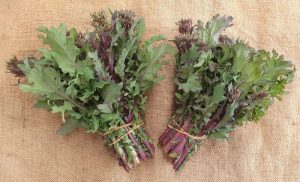 “What on earth is kale-ini?“, you may ask. Well, it is a word that I have made up to describes the crop that you are about to be introduced to.
“What on earth is kale-ini?“, you may ask. Well, it is a word that I have made up to describes the crop that you are about to be introduced to.
If you have grown kale throughout Winter, you will know that the change in temperature and sunlight signals it is time to create the next generation, and your kale will start developing flowering stalks.
But, before you pull it out to make way for your summer crops, wait! The florets produced by your kale plants are 100% edible and rather delicious, providing that you harvest them prior to the floret opening. Hence, why I call the crop kale-ini, as it is effectively a broccol-ini alternative.
Harvest the thicker stems and pop the thin, spindly ones in the compost as they are often fibrous. Aphids will love your kale-ini as much as you do, so inspect the florets for these little critters (a jet of water will dislodge them from the plant, or even a flick of the floret onto your palm once harvested will often do the trick).
As the weather warms up, you will need to harvest stems daily. Doing so will then see the plant reward you with more kale-ini stems. Steamed, stir fried or even roasted – it makes the hungry gap of Spring something to look forward to.
The humble teaspoon (by Amanda Coombes)
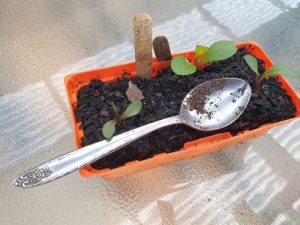 I enjoyed reading the recent article about knives. It got me thinking about one of my most favourite, useful implements that I use in the garden, namely the humble teaspoon!
I enjoyed reading the recent article about knives. It got me thinking about one of my most favourite, useful implements that I use in the garden, namely the humble teaspoon!
Apart from the obvious (stirring a cuppa, or measuring bicarb or Epsom salts), the teaspoon has a myriad of uses in the garden. I love it because it helps me gently remove seedlings that I have propagated without damaging the delicate roots. For me, it is the perfect size.
Anyone else got a favourite, simple, basic tool that they could tell us about?
Jon’s podcast of the week
I listen to both real time webinars and after-the-event podcasts. You can do both at My Smart Garden, which is a collaboration of various Melbourne councils.
Meg’s garden this month
Like others, I have been tackling the cockatoos that have come to visit. They have just spent a morning uprooting my herb pots on the deck. They also had a lot of fun uprooting, chewing and discarding seedlings. I have tried various deterrents over the years, but only strong wire covers seem to work.
Rhubarb is at its best new in early Spring and I am picking weekly. Make sure you twist the stems at the base rather than cut the rhubarb. The stems are wonderful roasted at 160degC for about 20 minutes with the juice and rind of an orange, a teaspoon of vanilla paste and about 200g of sugar (or to taste).
My new fruit trees are planted now, replacing the damage of the fallen tree. I have planted Moorpark and Trevatt apricots and a Hicks Fancy mulberry. They will need watering while they establish but they are already budding with green shoots. I have tied up the raspberry canes and checked and strengthened the supports plus put in some carrots and beetroot seeds.
This month I am:
- Scaring the cockatoos from the vegetable patch.
- Enjoying the quince in full flower.
- Mulching under the fruit trees.
- Starting seeds in seed trays inside ready for spring planting and wishing that I had labelled them.
- Telling myself that we do not need more marmalade.
Another free food pantry – Annie Borat Community Cupboards
The Annie Borat Community Cupboards are a free food pantry, street library and a craft/games cupboard for everyone to use for free and open 24/7. Take what you need. You do not need to make an appointment, you do not need to provide ID or a bank statement and use of the cupboards is completely anonymous. Donations are what keeps the cupboards full and they welcome any unopened non-perishable food, fresh fruit & veggies and toiletries. Please do not donate any food that needs refrigeration or freezing. The street library accepts any books, magazines or comics but not CDs or DVDs. The craft/games cupboard accepts any craft items and games but not toys. Welcome Bali, Melinda and Kim!
I think that their yellow theming is very striking!
That brings the total number of free community pantries to 12. Look at a map of where they all are.
Remember when we could travel?
 In 2013, Dave Chambers went to Milan in Italy, ate lots of gelati, and wrote an article about his experience. In 2021, unable to travel, Dave went into his living room, re-read his article and wept. Read Dave’s article on our website.
In 2013, Dave Chambers went to Milan in Italy, ate lots of gelati, and wrote an article about his experience. In 2021, unable to travel, Dave went into his living room, re-read his article and wept. Read Dave’s article on our website.
Tomato and other veggie seedlings available at Kevin Heinze Grow (Coburg and Doncaster)
As discussed last week, the 2021 Kevin Heinze Grow (KHG) Spring Fair has had to be cancelled but they have replaced it with a ‘call and collect’ service. Their tomato and other veggie seedlings (grown by KHG participants under the guidance of horticulturalists) will be available for purchase using this system during October (until sold out).
You choose what you want from their website and send them an email (plantsales@kevinheinzegrow.org.au). They will then contact you re payment and to organise collection.
An urban farm for Eltham?
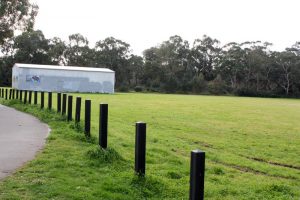 Local Food Connect is working to establish an urban farm in Eltham. They recently presented to Nillumbik councillors to promote the idea that part of a small parcel of former farmland in central Eltham be used as an urban farm. The site is on the last remaining part of what was once Fabbro’s Farm. Fabbro’s was the last operational farm in Eltham, which was once a centre of agriculture before urban development progressively replaced the plough and the orchard. Sign up to join their Urban Farm Interest Group and to receive occasional updates on progress.
Local Food Connect is working to establish an urban farm in Eltham. They recently presented to Nillumbik councillors to promote the idea that part of a small parcel of former farmland in central Eltham be used as an urban farm. The site is on the last remaining part of what was once Fabbro’s Farm. Fabbro’s was the last operational farm in Eltham, which was once a centre of agriculture before urban development progressively replaced the plough and the orchard. Sign up to join their Urban Farm Interest Group and to receive occasional updates on progress.
The 52nd Eltham Wine Show
The Eltham & District Winemakers Guild’s Eltham Wine Show is Australia’s largest annual competition for amateur grape winemakers, meadmakers, country winemakers and liqueur makers. They have decided that their 52nd show will go ahead on 21st November.
Amateur winemakers are invited to enter your wine, cider or kombucha to the show. The entries will be judged by wine industry professionals, and all entries will be scored and receive constructive comments. The competition classes are:
- Red, white and sparkling grape wines.
- Country wines.
- Fortified wines and liqueurs.
- Meads.
- Ciders.
- Kombuchas.
Entries close on 23rd October. The entry forms are available on their website.
Every newsletter deserves a good picture
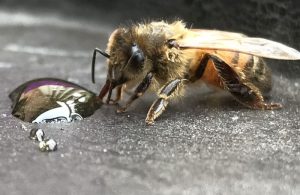 Rebecca Haschek has sent in a photo of a honey bee being revived: “My daughter Matilda found a bee today which was not moving much, so she picked it up and we gave it some honey and water.”
Rebecca Haschek has sent in a photo of a honey bee being revived: “My daughter Matilda found a bee today which was not moving much, so she picked it up and we gave it some honey and water.”
Do you know?
Victoria Kanicki: “I recently purchased some bergamot, korean mint, valerian and calendula seeds. Despite having looked on the Internet, I can’t seem to find anywhere reliable to advise me on where or how to plant them. In large pots? Straight into the earth? Any other advice?” Email your thoughts.
Can you help?
Suzy Georges is look for a Thompson table grapevine cutting that she can grow. Can anyone offer one. Email me and I’ll put the two of you into contact.
What seeds to plant in October
Here is a list (see the planting guide for more detail):
CucurbitsCucumber |
Other warm season veggiesBeans |
Leafy greensLettuce |
RootsBeetroot |
Other veggiesAsparagus |
Compared with September, the solanums (capsicum, chilli, eggplant and tomato), basil and coriander drop out of the list, whilst the cucurbits (cucumber, gourd, pumpkin, rockmelon, watermelon and zucchini) stay in. Note, however, that these lists are the months that it is ideal to plant particular seeds and that you can sometimes plant in other months. So, for example, if your tomato seeds didn’t germinate in September, it’s better to try again in October (or buy some seedlings) rather than face the prospect of no homegrown tomatoes.
Helen Simpson has previously written ‘how to grow’ articles for us about many of the warm season veggies, namely: basil, chilli, cucurbits and tomatoes. Robin Gale-Baker has previously written about how to grow eggplants and capsicums. And Helen has written more generally about Spring veggie garden preparation.
Guy’s tip of the week – silverbeet
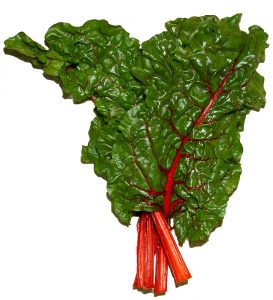 For beginners, what is a good vegetable to grow? Here is my argument for silverbeet (aka chard): you can plant it any time of year, it always seems to grow successfully and you can harvest leaves from it at any time. It also looks more interesting than other leafy greens, particularly if you grow a mix of the various coloured stemmed varieties (white, red, yellow, orange and pink). And, finally, it is the favourite food of my chickens!
For beginners, what is a good vegetable to grow? Here is my argument for silverbeet (aka chard): you can plant it any time of year, it always seems to grow successfully and you can harvest leaves from it at any time. It also looks more interesting than other leafy greens, particularly if you grow a mix of the various coloured stemmed varieties (white, red, yellow, orange and pink). And, finally, it is the favourite food of my chickens!
Would anyone like to nominate any other vegetables that are both easy and rewarding to grow? Email me with your choice together with a few words about your reasons why.
In passing, for beginners, what are difficult vegetables to grow? Here is my list: broccoli, Brussels sprouts, cabbage, cauliflower, okra, peas, rockmelon, sweetcorn, sweet potato and watermelon.
Angelo’s article of the week
Why you shouldn’t fertilise gardens in winter in cool and temperate climates.
Read more of Angelo’s articles about food growing.
The photo competition
The results of last week’s competition
The theme was ‘exotic (i.e. non-native’) flowers’ and we had 20 entries. Thanks, everyone!
The winner, as judged by our panel, was Julie French’s photo of a Jacobean lily.
Commendations to Doris Glier’s two-headed bird of paradise, Amanda Coombes’ Corydalis porcelain blue and Dorothy Kwak’s carrion plant, in each case because of their unusualness.
Many of the other photos are also interesting.
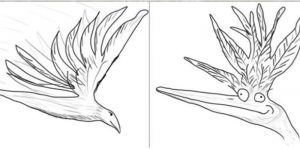 Incidentally, in reference to Doris’ photo of a bird of paradise, the plant is called a bird of paradise because it supposedly looks like the drawing on the left of the sketch, not the drawing on the right.
Incidentally, in reference to Doris’ photo of a bird of paradise, the plant is called a bird of paradise because it supposedly looks like the drawing on the left of the sketch, not the drawing on the right.
Even more incidentally, watch these 3 short David Attenborough videos featuring real (i.e. avian) birds of paradise: video 1, video 2 and video 3.
This week’s competition
As we are still in lockdown, and as last week’s competition attracted a reasonable number of entries, we are going to have another photo competition. The theme this week is ‘pictures from your veggie patch’. Email your photos together with some words about them.
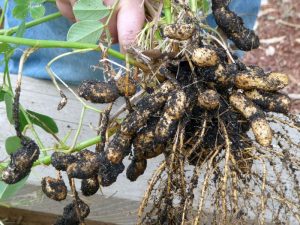 To get you started, the photo right is of a harvested peanut plant that I grew. The summer season is just long enough to grow peanuts successfully in Melbourne. Plant in November. The peanuts start developing above ground (where the pretty yellow flowers were) then, by gravity, the stem bends down to touch the ground then, by some mysterious force, the incipient peanut buries itself just below the surface. Until you harvest the plant, you don’t know whether you have zero or hundreds of peanuts.
To get you started, the photo right is of a harvested peanut plant that I grew. The summer season is just long enough to grow peanuts successfully in Melbourne. Plant in November. The peanuts start developing above ground (where the pretty yellow flowers were) then, by gravity, the stem bends down to touch the ground then, by some mysterious force, the incipient peanut buries itself just below the surface. Until you harvest the plant, you don’t know whether you have zero or hundreds of peanuts.
Recent articles that you might have missed
Articles published over the last month:
- Growing great spuds (by Robin Gale-Baker).
- Rock samphire – Crithmum maritimum (by Jaimie Sweetman).
- How to make homemade beer or cider (by Lucinda and Sean Flynn).
- How to make homemade wine (by Lucinda and Sean Flynn).
- Hand saws (by Stuart Rodda).
- Knives (by Stuart Rodda).
- Mini chainsaws (by Stuart Rodda).
Which link was clicked most times in the last newsletter?
The most popular link last week was Angelo’s article entitled Robin’s article on how to grow potatoes.
Word of the month
‘Plirding’, meaning to pick up litter whilst bird watching. Watch this 60 minute webinar on the subject by Julia Cirillo, from Merri Creek Management Committee.
Proverb (or phrase) of the month
Bubble and squeak. Meaning: a dish of cooked potatoes and cabbage, mixed together and fried. In Australia, it sometimes also includes peas and pumpkin.. The phrase dates back to 18th Century England, when it meant a dish of fried beef and cabbage. According to Francis Grose’s Classical Dictionary of the Vulgar Tongue, published in 1785, it was “so called from its bubbling up and squeaking whilst over the fire.“. By the 1950s, potatoes had replaced beef as the main ingredient, perhaps due to the scarcity of meat after World War II.
It is similar to the Scottish dish rumbledethumps and to the Irish dish colcannon.
Read about more food-related proverbs.
Gardening quote of the month
“To dwell is to garden.” by Martin Heidegger.
Joke (or pun) of the week
How do you milk sheep? Release a new iPhone and charge $1,500 for it.
Upcoming online events – newly announced
If you know of an upcoming online event that you would like to see included in this newsletter, email me with either the details or a link to the details.
Grow into Spring; Saturday, 2nd October, 10am-midday
Organised by CERES. $50. Explore: which veggies grow in spring; when to start and plant your spring vegetables; how to grow them from seed and seedlings; preparing your soil and potting mixes for optimum spring growth; and looking after your veggies through the growing season. Presenter: Donna Livermore. Read more and potentially book your place.
Cook with Rosa; Saturday, 9th October, 2-4.30pm
Rosa’s traditional Italian cooking classes have moved online. $55. Menu: nonna concetta amaretti plus homemade tiramisu with homemade ladyfinger biscuits. Book by email (rosascookingclass@gmail.com).
Veggie gardening for beginners; Sunday, 10th October, 10.30am-midday
Organised by Bulleen Art and Garden. $35. This will cover all of the veggie gardening basics, from setting up your patch to harvesting. Presenter: Angelo Eliades. Read more and potentially book your place.
Gut health workshop; Tuesday, 12th October, 7-8pm
Organised by Whitehorse Manningham Libraries. Free. This workshop will cover practical dietary and lifestyle tips to nourish and support your gut microbiome, supporting good health, wellbeing and productivity. Presenter: Lindy from The Nutrition Guru. Read more and potentially book your place.
Beginners guide to pruning; Thursday, 14th October, 6-8pm
Organised by CERES. $50. Skill up in all the basics so you can get started pruning right away. Presenter: Carol Henderson. Read more and potentially book your place.
Growing great tomatoes; Saturday, 16th October, 10am-midday
Organised by CERES. $50. This workshop will cover: how to choose which tomato varieties to grow; whether to grow from seed or seedling, in pots, raised beds or directly into soil; when and how to plant and tips for success; training growth with stakes, cages or string vs free range; pros and cons of pruning; preventing common problems; feeding; and crop rotation. Presenter: Carol Henderson. Read more and potentially book your place.
Understanding and improving your soil; Sunday, 17th October, 10.30am-midday
Organised by Bulleen Art and Garden. $35. Learn how to identify the various types of soils and improve them to create a healthy and productive garden. Learn about the fundamentals of soil ecology, plant nutrition, soil pH management and soil care. Presenter: Angelo Eliades. Read more and potentially book your place.
Composting at home; Saturday, 23rd October, 10-11am
Organised by Maroondah Council. Free. Learn how to set up, maintain and use a compost bin at home. Read more and potentially book your place.
Worm farming and Bokashi at home; Saturday, 23rd October, 11.30am-midday
Organised by Maroondah Council. Free. Learn how to set up, maintain and use a worm farm and Bokashi bucket. Read more and potentially book your place.
Home composting for beginners; Saturday, 23rd October, 2-3.30pm
Organised by Edendale Farm. Free. Learn the basics of home composting including how to set one up and maintain it, the simple recipe for success, what to add and what not to add. Read more and potentially book your place.
Grow more, work less; Monday, 25th October, 2.30-3.30pm
Organised by Whitehorse Manningham Libraries. Free. This workshop will cover soil health, seeds, seedlings, growing fewer weeds and succession planting. Presenter: Alison Sizer from Urban Harvest. Read more and potentially book your place.
Preparing for a summer veggie crop; Wednesday, 27th October, 7-8.30pm
Organised by Boroondara Council. Free. You will learn about: garden maintenance and preparation; selecting what to plant and when to plant it; growing summer veggies in pots; managing hot weather, including mulching and smart watering; improving productivity sustainably, including crop rotation and companion planting; and soil preparation and management. Read more and potentially book your place.
Herbs for the kitchen garden; Thursday, 28th October, 6-8pm
Organised by CERES. $50. Learn the best herbs for sunny or shady spots, which grow well pots and what to grow when. Discover rules of thumb to know which herbs you can take cuttings from and which grow best from seed. Presenter: Carol Henderson. Read more and potentially book your place.
Keeping backyard chooks; Thursday, 28th October, 7-8pm
Organised by Whitehorse Manningham Libraries. Free. This workshop will cover chook health, nutrition, housing, protection from predators and pests, the benefits of having chooks and Council bylaws. Presenter: Ella from Chooktopia. Read more and potentially book your place.
Guiness world records extra virgin olive oil tasting; Thursday, 28th October, 7.30-8.30pm
Organised by Cobram Estate. $10 (or $5 if you use the promotion code FOODWINE). Cobram Estate is trying to break the world record for the number of participants in a virtual olive oil tasting event. You will receive an oil tasting kit delivered to your home and will undertake some guided testing. Read more and potentially book your place, noting that ticket sales end at 5pm on 30th September.
Upcoming online events – previously announced
Backyard Honey; Thursday, 30th September, 11am-midday
Organised by Boroondara Libraries and featuring Backyard Honey. Free. Watch life inside a live honeybee hive and learn about the role bees play in our world. Read more and potentially book your place.
Worms, wonderful worms; Thursday, 30th September, 1-2pm
Organised by Cultivating Community. $12. Suitable for children 6 to 12 years. What do worms get up to when nobody is looking? What is the difference between earthworms and composting worms? And how to make your own in-ground worm farm to promote free-range worms and healthy soil in your garden? Read more and potentially book your place.
Know and grow heirloom tomatoes with Penny Woodward; Saturday, 2nd October, 1.30-3pm
Organised by Nillumbik and Banyule Councils. Free. Learn about: where and how to grow and care for tomatoes; some of the health benefits of eating tomatoes; and how to deal with the pests and diseases that can affect tomatoes. Read more and potentially book your place.
Growing fruit & veggies in small spaces with Angelo Eliades; Sunday, 3rd October, 10.30am-midday
Organised by Bullen Art and Garden. $35. Angelo will teach you how to grow your own food in the smallest of spaces. Fruit, veggies, berries and herbs can be all squeezed in, it’s all just a matter of knowing where to begin. Read more and potentially book your place.
Eating for energy and strength; Tuesday, 5th October, 1-2.30pm
Organised by Manningham Council. Presenter: Karen Lovell. Free. Find out more about the foods that the body needs to get the most out of every day. Understand what to eat and why. Read more and potentially book your place.
Wicking beds; Saturday, 9th October, 1-2.30pm
Organised by Sustainable Macleod. $15. Paul Gale-Baker will discuss the how and why of wicking beds, including a detailed explanation on how to put them together. Read more and potentially book your place.
SecondBite’s mission is to end waste, end hunger; Thursday, 14th October, 1-2pm
Organised by Manningham Council. Presenter: Steve Clifford, CEO of SecondBite. Free. SecondBite rescues surplus food from retailers, manufacturers and farmers and re-distributes it free of charge to local charities and not-for-profits that run food programs. Read more and potentially book your place.
Beginners guide to urban farming (7 sessions); starting Sunday, 17th October, 2pm
Organised by Richmond Community Learning Centre. $82 for all 7 sessions. The 7 sessions will cover: 1. making a wicking pot, starting seedlings, container gardening, introduction to permaculture; 2. soil, making biochar, trench composting, soil carbon, hugelkultur, soil food web, fungi; 3. composting, worm farming, bees wax wraps, weed tea; 4. straw bale gardens, hidden hugelkultur, no dig gardens, bee scaping, food scaping; 5. creating a guild, plant companions, polycultures, building soil, maximising space, increasing vigour and yield; 6. feeding the soil, organic control of common problems and pests, chop and drop, looking after our insect friends; and 7. seed saving, cuttings, produce sharing, seed sharing and making community connections. Read more and potentially book your place.
Otao Kitchen cooking classes; various dates
Otao Kitchen have moved many of their cooking classes online including chinese, dumpling making, indian, indonesian, japanese, korean, thai and vietnamese, Read more and potentially book your place.

